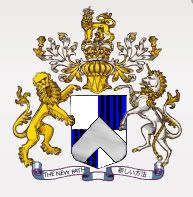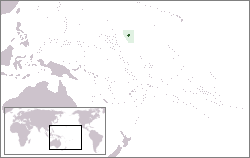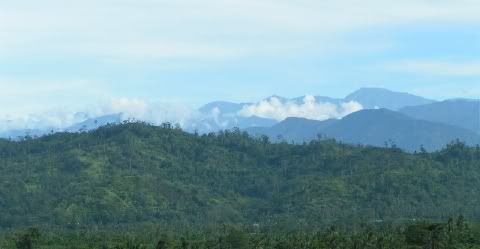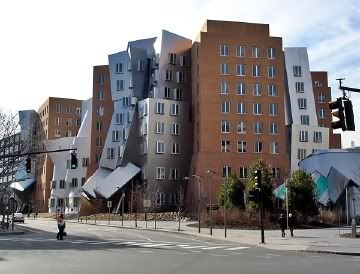Kiue
| The Grand-Duchy of Kiué キウエイ大公国 | ||||||||||||||||||||||||||||||||
|---|---|---|---|---|---|---|---|---|---|---|---|---|---|---|---|---|---|---|---|---|---|---|---|---|---|---|---|---|---|---|---|---|

Flag
| ||||||||||||||||||||||||||||||||
|
Contents
History and General Overview
On the 11th June 2005, a large earthquake occurred deep beneath the Pacific Ocean originating off the north coast of New Zealand. What ensued were 28 days of ash and steam covering the region. When all cleared, a new island some 3,000 square kilometres large was left exposed above the ocean surface centred approximately 2,600km north of Auckland. Within two weeks, the British Royal Navy claimed the territory for Britain. After a small military engagement with the American Navy, Britain kept the territory but it remained unused for five months as earthquakes continued one after another.
Meanwhile, a small gentlemen's social club in London under the auspices of a Mr Alfred Morecott and a group of six other wealthy philosophes and social elites pondered how to resourcefully use the island. When Downing Street announced plans to colonise the island, it was Mr Morecott who approached Prime Minister Tony Blair and, using a convincing argument to inspire nationalism, he agreed to allow Morecott to lead local governmental operations on the island.
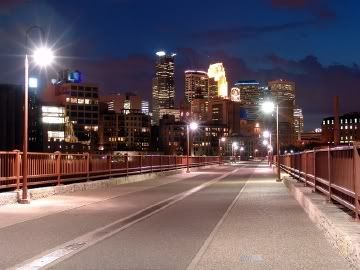
In an interesting turn of events soon to become one of the most strange and inspiring stories of the past century, Mr Morecott's car failed to start one evening after a meeting. Not having a ride and being visually distressed, a young 21-year-old London Symphony Orchestra player by the name of Adrian Stoughton asked him if he needed a lift. After a night of heavy drinking, Mr Morecott willingly divulged the group's plans in the car to Stoughton, who was asked to attend the next event. A first-chair cello player, versed in six languages, and holding degrees in Asian Languages and City Planning, Stoughton was well-informed in political affairs and quickly integrated himself into the group, though the second-youngest member, Mr Carlyle Reynes, was 27 years his senior.
The eight members arrived on the island 5 months later, in winter of 2005. Following to their strict set of principles, they set out to create an island unlike the world had ever seen. With strict architectural guidelines, the island was to be a fusion of deconstructive postmodern styles combined with ancient Greco-Roman accents. Top British and Japanese design teams, eager to show off their talents to a new area with supple amounts of land and endless supplies of money, created towers of twisted steel and glass. Several terrain rebuilding firms were employed to sow vegetation using drop planes and fertiliser in certain regions. The country was also to be bilingual, with all potential residents speaking at least English as well as Japanese, due to the close proximity to Japan, the economic ties, and the large number of Japanese applicants during the initial immigration phase. The finale of Saint-Saëns' "Organ Symphony no. 3" was chosen as the national anthem, to remain without lyrics, and an official flag bearing three prominent colours of Kiué - black, blue and silver - was designed by soon-to-be Duke Adrian Stoughton. All signs are written in both English and Japanese.
The Grand Duchy of Kiué (キウエイ大公国, Kiuei Taikoukoku in Japanese) was formally established as an independent nation on the 11th June 2007, much to the dismay of Great Britain, whose politics were seen as "too regressive" by the Kiuéan government. Its government was established as a duchy, appointing the young and charismatic Adrian Stoughton as Duke. Kiué has since risen to international status as an epicentre of free trade and progressive values throughout the world.
Government
Organisation and Structure
The seven original members created the governing body known as The Forum. The Forum passes all edicts and decrees within the island and acts according to the interests of the Duke, who has the power to veto any edict passed. To date, no edict has ever been vetoed as the views and aims of The Forum are virtually one and the same with Duke Stoughton's. For an edict to pass, it must receive five of the seven Forum member votes. If an edict fails to elicit five votes, an intervention by the Duke guarantees passing unless the edict received one or zero votes to begin with.
Since there is but one party, a supreme legislature, there are no opposing political parties. The voice of the people is heard through a series of public forums, usually run by various labour unions in different cities. The public forums compile a list of grievances and bring it before the County Council. Examples of county-level grievances would be roads in need of repair, need for a local after-school resource centre, etc. Should it be a nation-wide issue that the county council cannot address, it is brought forth directly to The Forum. The Forum is very lenient and usually resolves most legitimate claims brought to it.
Members
In addition to their duties on the forum, each member functions as minister of a department of the government. This breaks down as follows:
Emmett Wetherden - Minister of Transport
Nathaniel Haddock - Minister of Health
Carlyle Reynes - Minister of Education
Jonathan Astor - Home Secretary
Cecil Perrin - Minister of Finance
Kelsey Ashcombe - Minister of Justice
Alfred Morecott, the seventh member, represents Kiué in the United Nations.
Other departments not classified as ministries, such as the Department of Agriculture and the Department of Customs and Border Patrol (a department of the Home Office), are led by other Kiuéan citizens directly appointed by The Forum.
Political Affiliations
Kiué is a member of the European Union, the United Nations, the Federative Trade Association (of Europe), and the Organisation for European Security. Kiué is a centrist monarchy (specifically a duchy) that values free trade, civil liberties and international prosperity. At present, Kiué is creating a special coalition of Francophone nations throughout Europe to promote French culture and encourage dialogue between French-speaking nations.
People
Background
As of 2010, eighty-nine percent of citizens of Kiué were not born on Kiué, but immigrated there following its creation between 2005 and 2009. About 44% of all immigrants are British, and another 38% are Japanese. 10% are from France or other French-speaking nations and 6% are from the Pacific Rim (non-Japanese). The remaining two percent are from elsewhere. Kiué recognises dual citizenship and most citizens do retain their original citizenship as well as their Kiuéan one.
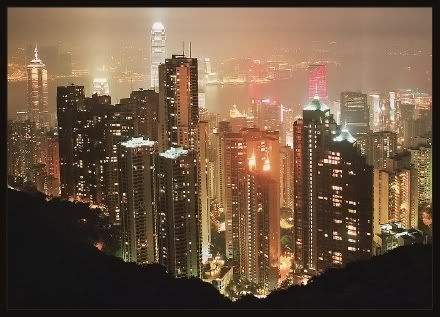
Immigration
Reflecting its seemingly casual, ultra-modern, capitalist feel, immigration in Kiué is very well-organised and liberal. The original creators envisioned a country of intellectualism coupled with progressive ideas, economic entrepreneurialism and fine arts. They also strove for an international society, drawing on people from all backgrounds to add in to the blend of lifestyles and persuasions.
-All holiday (tourist) visas are issued for a period not to exceed 90 days. After that, individuals wishing to stay longer must either apply for an extension to the Home Office, or apply for a limited residence visa. In addition to having little or no criminal background, applicants must also be conversational in one of the official languages, English or Japanese. Preference is given to those who speak both. Furthermore, applicants must not be overtly supportive of a political cause that would create turmoil or civil unrest, such as neo-Nazism or anarchy. While Kiué grants full freedom as to political affiliation, such radical and traditionally negative ideas are generally looked down upon. Applicants must be of sound mental health, though mentally handicapped applicants are analysed under different criterion and only need to be sponsored by a current Kiuéan citizen of sound mental health.
-After living in Kiué as a permanent resident for four years, one can apply for citizenship. Kiué recognises dual citizenship and also holds no travelling sanctions against another nation (eg. Cuba, North Korea, Iran). Many residents choose citizenship for that reason alone.
Religion
Kiué is by no means a religious state. In fact, approximately half of the population professes to have no religion at all. The most recent census, published in early 2006, breaks down religious persuasion as follows:
52% Atheism/Agnosticism
31% Anglicanism
7% Catholicism
6% Judaism
3% Asian religions (Buddhism, Shintoism, etc.)
1% Other
Geography
Terrain
</div>Kiué is a mountainous volcanic island with verdant vegetation and a subtropical climate similar to that of Taiwan. The main island is split almost in half by the River Downton. The north half features the most mountainous terrain and also the island's one active volcano, Mount Garnier. At a peak of 1,042 metres above sea level, Mt Garnier is the highest point in Kiué. The beaches in the north island are predominately rocky with some black sand on the coast north of Bainhampton. The waters surrounding the island are a deep teal and are home to the national animal, the porpoise. Ample amounts of snow atop Mt Garnier create a series of streams and waterfalls that run towards the River Downton in the centre of the island. The north also has more tropical vegetation due to the most direct rainfall on the south side of Mt Garnier.
Located on the south half is the Pilinsi National Forest, a more temperate forest featuring pine trees similar to those found in neighbouring Australasia. The forest occupies about one third of the southern half. Also on the southern half is a long peninsula jetting out from the south-west corner westward, where Vera Lighthouse is located. The south coast of Kiué has very sandy beaches and is flanked by natural jetties creating a harbour in the city of Misi. As a result, Misi is known as the resort area and most holidaymakers spend their time between the capital of Bainhampton and Misi, some 180 kilometres to the southeast.
Major Cities and Ports
</div>The capital city is Bainhampton (ベインハンプトン), home to all government offices, towering skyscrapers, multinational corporations, diplomatic embassies (with a few in Aldebourne), national museums and is considered by many to be the most modern city on the face of the globe. Broken down into twenty numerical subsections, Bainhampton's population is close to 5 million, making it unmistakably the largest city in Kiué.
About 170km to the north-east, directly up the River Downton on the east coast of Kiué, is the second-largest city - Aldebourne (アーヅバーヌ). Aldebourne is home to most domestic businesses and has a large residential population. In fact, nearly one million people travel the stretch of high-speed rail connecting Aldebourne to Bainhampton every day. Aldebourne is a relaxed local city and also has a large Japanese population. Whereas in Bainhampton it's more common to speak either language in conversation, Japanese is slightly more dominant in Aldebourne. Kiué University, the nation's largest private university, is located to the north of Aldebourne. Also on the rise is the music scene in Aldebourne. Most garage bands in Kiué get their start in the suburban areas of Aldebourne.
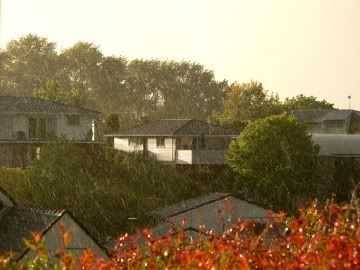
On the south coast, 183km south-east from Bainhampton and 241km south-west from Aldebourne, is the resort town of Misi (ミシ), world-renowned for its sandy beaches, temperate climate, five-star resorts and exquisite dining rivalled only by the international cuisine in Bainhampton.
On the south-west peninsula's north coast and located 83km to Bainhampton's southwest is the port city of Alban's Bay (アーバン湾). Much like the French town of Marseille, Alban's Bay is primarily a fishing town and is Kiué's biggest source of income from a domestic industry - fishing. With a small and patriotic population, Alban's Bay represents the real culture of Kiué.
Ports located in Kiué:
Bainhampton International Seaport
Aldebourne Docklands
Alban's Bay
Misi Harbour (for private boats and holiday vessels only)
Kiué's airport is called Kiué International Airport (KUI) and is located 70km to the south-east of Bainhampton on the edge of the Pilinsi National Forest. The national airline is Kiué-Air, a member of the One-World Alliance and the SilverAir Alliance, providing air service throughout Asia and the world. The terminal is brand new and has car hire facilities as well as a high-speed train with service directly to Bainhampton City Centre in 25 minutes.
Issues and Stances
Here are some current world issues and the stances that the Kiuéan Forum have adopted:
Homosexual marriage is legalised
Abortion is legal
All forms of drugs, as long as the taker does not present a hindrance to society, are legal at the age of 18
Capital punishment is illegal
Universal suffrage is effective at age 18
The age to buy alcohol and tobacco is 18
A military draft (selective service) will never be instated
Traffic drives on the left side of the road, and UK rules of the road and European signage apply
Government bursaries are available for university students based on secondary academic performance
Only the metric system is used; the English Imperial system was never adopted
Further links and information
NS Profile Internet Site for the Continent of Europe E-mail Duke Stoughton
